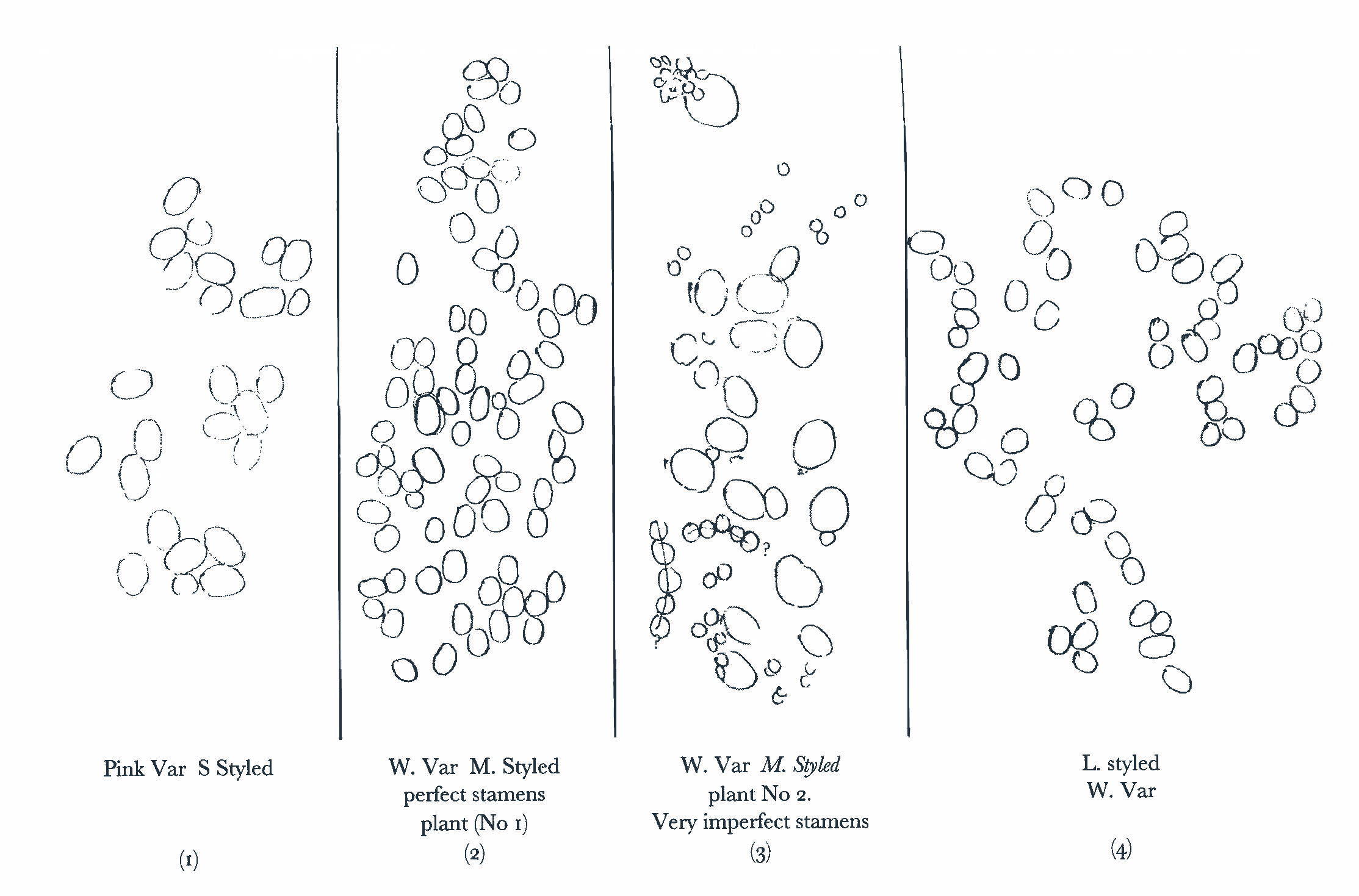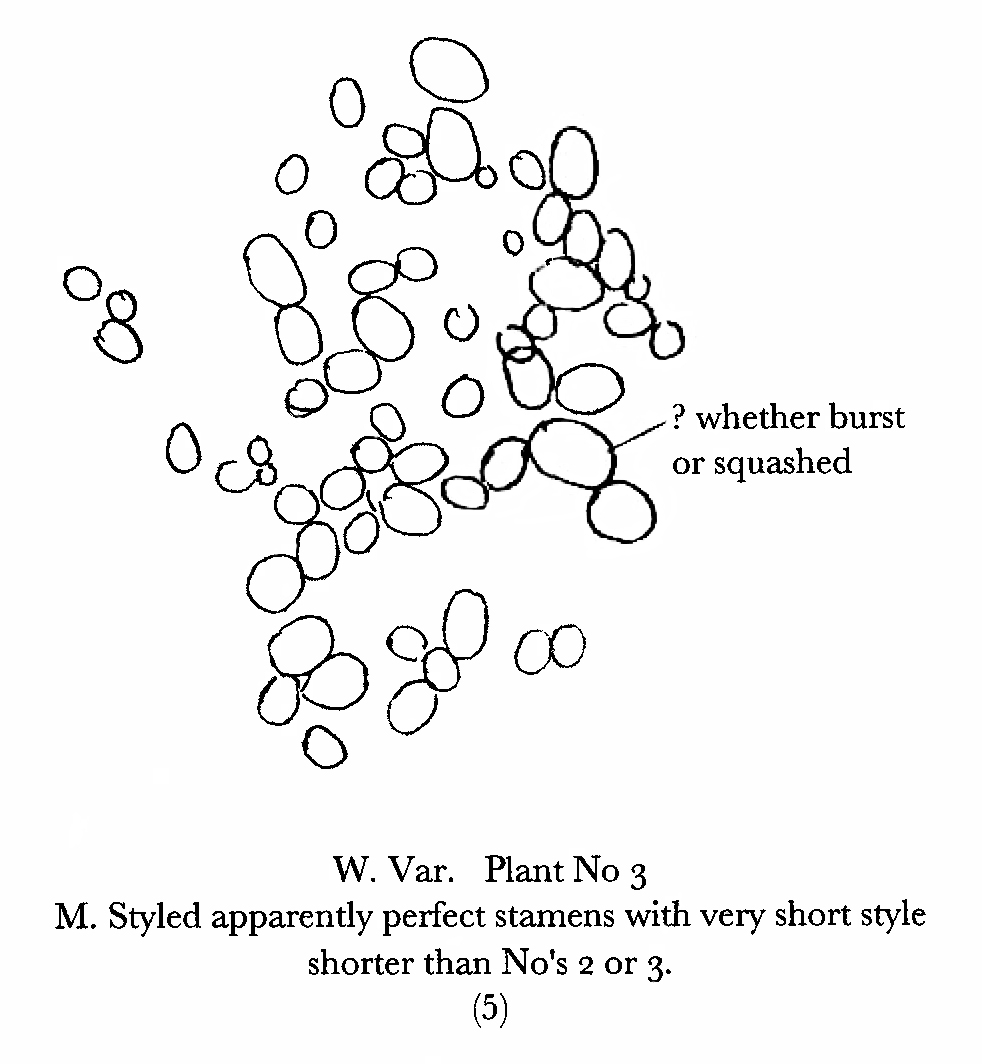From W. E. Darwin 22 March [1864]1
Southampton
March 22
My Dear Father,
I hope you are better again now.
I have drawn some more Primulas Chinese which I enclose marked 1, 2, 3, 4, 5.—2
No (1) is a short-styled Pink Variety.3
No (2) is a middle styled White Variety with short pistil tho’ not quite so short as No 5 The stamens of No (2) were quite perfect with very little imperfect pollen.
No 3 had tolerably short pistil (tho’ I think not so short)? as No’s (2) or (5)4 the stamens were all imperfect & shrivelled & hard when old, so that I had to dissect the stamens of 8 or 10 flowers to get the pollen I have drawn, there was a great deal imperfect pollen, but the large ones drawn seemed perfect grains.5
No (4) is the ordinary Long styled White Var. I was so surprised at the various sizes in pollen of No 2. that I got another M. styled plant with very short pistil No (5) & you see it is just the same as no (3).6
I am sure I did not mix the pollens as I did them on separate glasses, & in No 3 had to open the stamens under 1 inch & get the pollen out.
The middle styled seem generally to have more imperfect pollen & to vary in size very much.
I can easily get some more middle styled if you think it worth while
It is a most extraordinary about Old Fall7
[Enclosure 1]

[Enclosure 2]

CD annotations
Footnotes
Bibliography
Forms of flowers: The different forms of flowers on plants of the same species. By Charles Darwin. London: John Murray. 1877.
‘Illegitimate offspring of dimorphic and trimorphic plants’: On the character and hybrid-like nature of the offspring from the illegitimate unions of dimorphic and trimorphic plants. By Charles Darwin. [Read 20 February 1868.] Journal of the Linnean Society of London (Botany) 10 (1869): 393–437.
Summary
Sends drawings of the pollen from Chinese Primula plants with styles and pistils of different lengths; observations on sizes and condition of their pollen.
Letter details
- Letter no.
- DCP-LETT-4434
- From
- William Erasmus Darwin
- To
- Charles Robert Darwin
- Sent from
- Southampton
- Source of text
- DAR 108: 86–7, 175–7
- Physical description
- inc , sketches 2pp †
Please cite as
Darwin Correspondence Project, “Letter no. 4434,” accessed on 24 April 2024, https://www.darwinproject.ac.uk/letter/?docId=letters/DCP-LETT-4434.xml
Also published in The Correspondence of Charles Darwin, vol. 12


